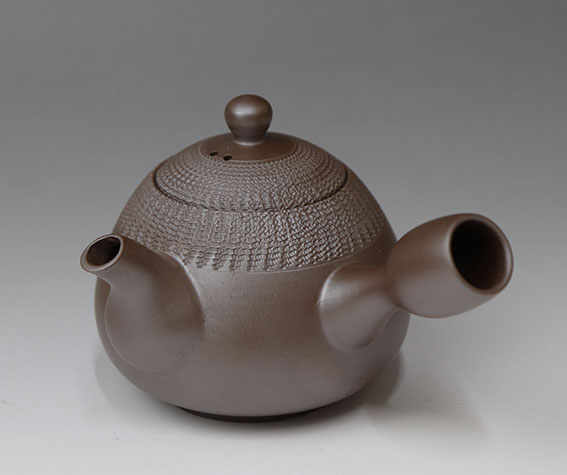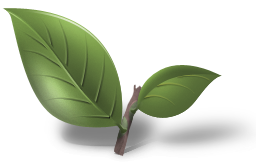I’ve been eyeing some of the Masaki Tachi banko pots on hojo’s site, so I ran a search over here to see if there was anyone who had one and could tell me their experiences. And lo and behold, nobody has talked about them yet, and we don’t have a banko thread!
Soooo... does anyone have one? What effects has it had on your tea? Or just banko in general?
Banko Thread
I have one Masaki Tachi banko kyusu, around 125ml, one of my first kyusu, this shape :

Used it a lot in the past, after taste was nice, but now I don't use it anymore because I find that every time I brew sencha with it, it turns it grassy.
Also got a vague memory of reading it on the teachat forum, someone asked how to clean his banko clay teapot because he experienced something similar.
About craftmanship, the lower part of the filter of my kyusu is not 100% attached to the inside of the body, little tea leave bits in the cup, don't know for other pots.
The clay get patina really fast. The shape is not that great for my use, I like to heat water then fill teacup then pour water from teacup to the kyusu, but the opening it too tiny for it.
This being said if anyone is interested, I am selling my pot for 30$+shipping

Used it a lot in the past, after taste was nice, but now I don't use it anymore because I find that every time I brew sencha with it, it turns it grassy.
Also got a vague memory of reading it on the teachat forum, someone asked how to clean his banko clay teapot because he experienced something similar.
About craftmanship, the lower part of the filter of my kyusu is not 100% attached to the inside of the body, little tea leave bits in the cup, don't know for other pots.
The clay get patina really fast. The shape is not that great for my use, I like to heat water then fill teacup then pour water from teacup to the kyusu, but the opening it too tiny for it.
This being said if anyone is interested, I am selling my pot for 30$+shipping
- bentz98125
- Posts: 77
- Joined: Tue Apr 30, 2019 10:08 pm
- Location: Seattle
I have owned two, both of which unfortunately broke due operator error. I have tried to wean myself off unglazed purple banko clay for fear of possible heavy handed effects on flavor. But every time, side by side tests have resulted in either neutral or positive results. So much so that if my brewing vessel isn't unglazed banko clay, I at least use a banko yuzamashi or yunomi. Of all the purple clays I think banko has the reputation for being more forgiving and among the most versatile for ranges of brewing variables. As far as Masaki Tachi's work specifically, handling and using his kyusu's gave me the feeling of precision, functionality, and beauty that Japanese master potters are notorious for. Privilege to own and use. While I love the eggplant shape, reasons of ease of filling with leaf and water, viewing the water/leaf ratio when pouring, and seeing the leaf while steeping, I have come to prefer wider than taller shape, and lid openings (and lids) bigger than smaller in size. But really don't think you can go wrong with anything of Masaki Tachi's.
-
swordofmytriumph
- Posts: 429
- Joined: Sun Dec 16, 2018 5:19 am
- Location: Seattle, USA
Awesome thanks all!
-
Vintagetea
- Posts: 14
- Joined: Sat Jan 16, 2021 10:22 am
- Location: Viet nam
- Contact:
Hi Mael, do you sold this pot, yet ?
Last edited by pedant on Fri Nov 26, 2021 12:28 am, edited 1 time in total.
Reason: mod edit: trimmed quote
Reason: mod edit: trimmed quote
-
Vintagetea
- Posts: 14
- Joined: Sat Jan 16, 2021 10:22 am
- Location: Viet nam
- Contact:
I want to buy it if you still not buy it.
Last edited by pedant on Fri Nov 26, 2021 12:28 am, edited 1 time in total.
Reason: mod edit: trimmed quote
Reason: mod edit: trimmed quote
-
Vintagetea
- Posts: 14
- Joined: Sat Jan 16, 2021 10:22 am
- Location: Viet nam
- Contact:
I also have a banko teapot, but I don't know if it's made by Masaki Tachi.
- Attachments
-
- FB_IMG_1638882818417.jpg (91.26 KiB) Viewed 5768 times
-
- FB_IMG_1638882815146.jpg (204.91 KiB) Viewed 5768 times
-
- FB_IMG_1638882799197.jpg (208.89 KiB) Viewed 5768 times
-
Vintagetea
- Posts: 14
- Joined: Sat Jan 16, 2021 10:22 am
- Location: Viet nam
- Contact:
I stumbled across the instagram account of the artist Haruka Matsuo, a Japanese potter living in the Netherlands who uses the traditional banko 'puzzle' molding technique for making pots - https://www.instagram.com/haruka_matsuo_banko/
I've read about it but never gotten to see these before, so its nice to get to see some photos/videos of the process. She also offers workshops at her studio where you get to make two cups plus a pot using this technique, which looks like a pretty fun and unique opportunity. Since purple or red banko aren't readily available to her she is using what looks like mainly local clay that turns white when fired. In some ways it almost makes it resemble more traditional/older banko pots to me before the high iron clay was developed and pots were typically either red or white with added glazing or color. A sharp contrast to the teaware I own and use but I really do like her playful and expressive bright colors she uses on her tea trays and some her pots and cups.
I've read about it but never gotten to see these before, so its nice to get to see some photos/videos of the process. She also offers workshops at her studio where you get to make two cups plus a pot using this technique, which looks like a pretty fun and unique opportunity. Since purple or red banko aren't readily available to her she is using what looks like mainly local clay that turns white when fired. In some ways it almost makes it resemble more traditional/older banko pots to me before the high iron clay was developed and pots were typically either red or white with added glazing or color. A sharp contrast to the teaware I own and use but I really do like her playful and expressive bright colors she uses on her tea trays and some her pots and cups.
https://japaneseteasommelier.wordpress. ... yokkaichi/
Masaki sometimes uses other types of clay (especially Shigaraki, which is a blend of various clays), and he took the opportunity to break an open secret concerning Banko clay, namely that it does not come from Yokkaichi, but from more distant mountains or even… Tokoname. The reason for this is simple. Yokkaichi, unlike Tokoname or Bizen, for example, is a highly urbanized area, with very large industrial complexes, and thus all earth (land and therefore also clay) is very expensive.
